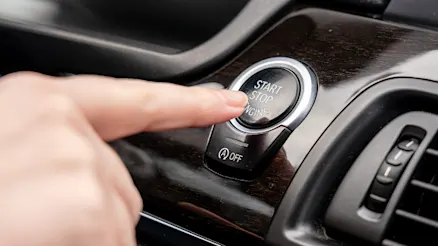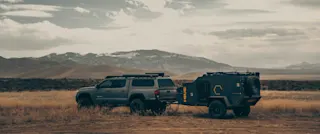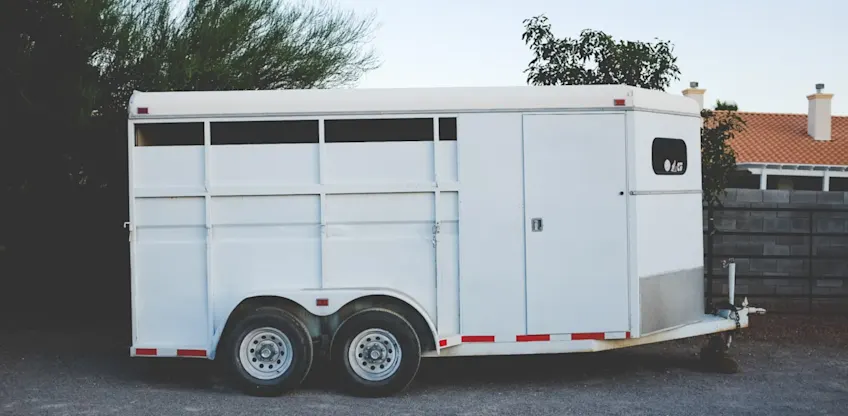
Why does my car behave differently when I start it in the morning?
Ever notice your car feels different in the morning? Learn why cold starts affect performance and how to keep your car running smoothly year-round.

Before you hit the road with your camper trailer, box-trailer, or boat trailer, knowing how to tow confidently is an essential skill. There's a lot to understand about towing, from tow balls and torque to trailers, tyres, and driving techniques. For many drivers it’s not something that we do on a daily basis, so here’s our handy guide on what you need to know before hitching your trailer onto your car, along with some tips on driving with a trailer.
Licence requirements for towing typically vary by state and territory. To find out if any specific towing rules apply to you (such as registration), reach out to your local transport authority.
Not sure what GCM, TBD, or ATM means? These can be found on your car and trailer’s compliance plates, so here’s a quick explainer:
Tare mass, also known as tare weight, is the weight of an empty standard vehicle, including all standard equipment, fluids (such as oil and coolant), and a full tank of fuel. The weight of passengers, cargo, or any additional accessories or modifications is not included.
The tare trailer mass, or tare weight (TARE), refers to the weight of an empty trailer. This includes the trailer's frame, wheels, and any permanently attached equipment. Like the tare mass for vehicles, it does not include any payload, cargo, or removable equipment.
Curb mass, also referred to as curb weight, is the weight of a vehicle with all its standard equipment, fluids, and a full tank of fuel, ready to drive, but without passengers or cargo. It’s essentially the tare mass plus everything else that makes the car ready to go ‘from the curb'.
Gross vehicle mass (GVM), or gross vehicle weight (GVW), is the maximum permissible weight of a fully loaded vehicle as specified by the manufacturer. This includes the vehicle's tare mass, the weight of passengers, cargo, and any additional equipment. For the safety and performance of your car, it’s best to keep within this weight limit.
Aggregate trailer mass (ATM), also known as aggregate trailer weight (ATW), is the maximum permissible weight of a trailer when it is fully loaded, including its payload, as specified by the manufacturer. This weight includes the tare weight of the trailer plus the maximum load it can carry. Keep in mind that this is measured with the trailer detached from the towing vehicle.
Gross combination mass (GCM), or gross combination weight (GCW), is the maximum allowable weight of a towing vehicle and its trailer(s) combined, fully loaded as specified by the manufacturer. This includes the GVM of the towing vehicle and the ATM of the trailer. Exceeding the GCM can lead to unsafe driving conditions and potential damage to the vehicle and trailer.
Tow ball download (TBD) refers to the downward force exerted on the tow ball of your car by the trailer's coupling. Properly managing this weight is crucial for safe towing, as it affects the stability and handling of both the towing vehicle and the trailer.
Want to learn more? Check out our guide on how to calculate your towing capacity.

Before hitting the road with a trailer in tow, make sure both the towing vehicle and the trailer are prepared for a safe journey. Here’s a step-by-step guide on what to do before towing a trailer:
Your car’s torque will be what’s doing all the work when you’re towing, so consider its specifications to see if you’ve got enough to make light work of towing. Most people pick diesel cars for this exact reason as they can produce plenty of grunt power without having to rev too hard compared to petrol engines.
One thing you’ll notice straight away is that your car behaves differently with a trailer behind it, and the size and weight of the trailer can make that difference more noticeable. Acceleration will be slower, braking distances will be longer, and handling will feel trickier. To stay safe on the road, here’s a few quick tips:
Ready to go? Dive into our ultimate road trip guide or explore the the best road trips out of Sydney.

Ever notice your car feels different in the morning? Learn why cold starts affect performance and how to keep your car running smoothly year-round.

Regularly checking your tyre pressure is crucial to your vehicle’s safety, fuel economy and optimal driving.

Looking for the perfect gift for the car enthusiast in your life? Carma’s experts have you covered.